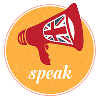The Past Simple To Talk about State
We can also use the past simple to talk about a past state of being. When we talk about state of being, we are not talking about an action but about the way someone feels, usually physically. In order to express how we feel we need to usually need to use an adjective, a noun, prepositional phrase. Most of the time, we use the verb to be in the past simple simple to express how someone was feeling.
Peter was happy to hear from his parents.
Julie’s wedding was the best day day of her life.
Before I talk about how to make the past simple, you need to understand that in the past simple we have two types of verbs, regular and irregular. Regular verbs are easy enough to use as they follow the same pattern and end in -ed in the past simple. However, irregular can get very confusing and hard to learn for non-native English speakers as you have to learn the full list of irregular verbs in order to be able to use the past simple correctly. Click HERE to download a list of irregular verbs. I recommend you try learn 3 irregular verbs per day.
How To Make The Past Simple
Before I talk about how to make the past simple, you need to understand that in the past simple we have two types of verbs, regular and irregular. Regular verbs are easy enough to use as they follow the same pattern and end in -ed in the past simple. However, irregular can get very confusing and hard to learn for non-native English speakers as you have to learn the full list of irregular verbs in order to be able to use the past simple correctly. Click HERE to download a list of irregular verbs. I recommend you try learn 3 irregular verbs per day.
How To Make The Past Simple
For regular verbs, add -ed to the base form of the verb (or just -d if the root form already ends in an e):
Stay→Stayed
Hate→Hated
Listen→Listened
Push→Pushed
Love→Loved
For irregular verbs, things are bit more difficult as I mentioned above because you need to remember all of them. And as their name suggests, irregular verbs do not always follow a pattern making them sometimes hard to remember. Click HERE to download a list of irregular verbs.
Sometimes, the past simple of some irregular verbs looks exactly like the root form:
Put→Put
Cut→Cut
Set→Set
Cost→Cost
Hit→Hit
For other irregular verbs, including the verb to be, the past simple form is a bit more difficult and less logical:
See→Saw
Build→Built
Go→Went
Do→Did
Rise→Rose
Be→Was/Were
One of the good things about the past simple, compared with other languages, is that the past simple version of the verb does not need to change according to the subject, it's the same in with all subjects. For example:
I spoke / You spoke / He spoke / She spoke / We spoke / They spoke
As you can see above, the past simple does not change according to the subject. One exception to the this rule is the verb to be.
I was / He was / She was / It was
You were / They were
I was late for work and so were my friends.
Jake Borland
Jake Borland is an experienced English teacher with 20 years in the field. As the co-founder and Marketing Manager of Speak English Institute, he is dedicated to delivering high-quality education both in-person and online. Jake’s passion lies in helping students improve their English skills through engaging and effective learning experiences.

